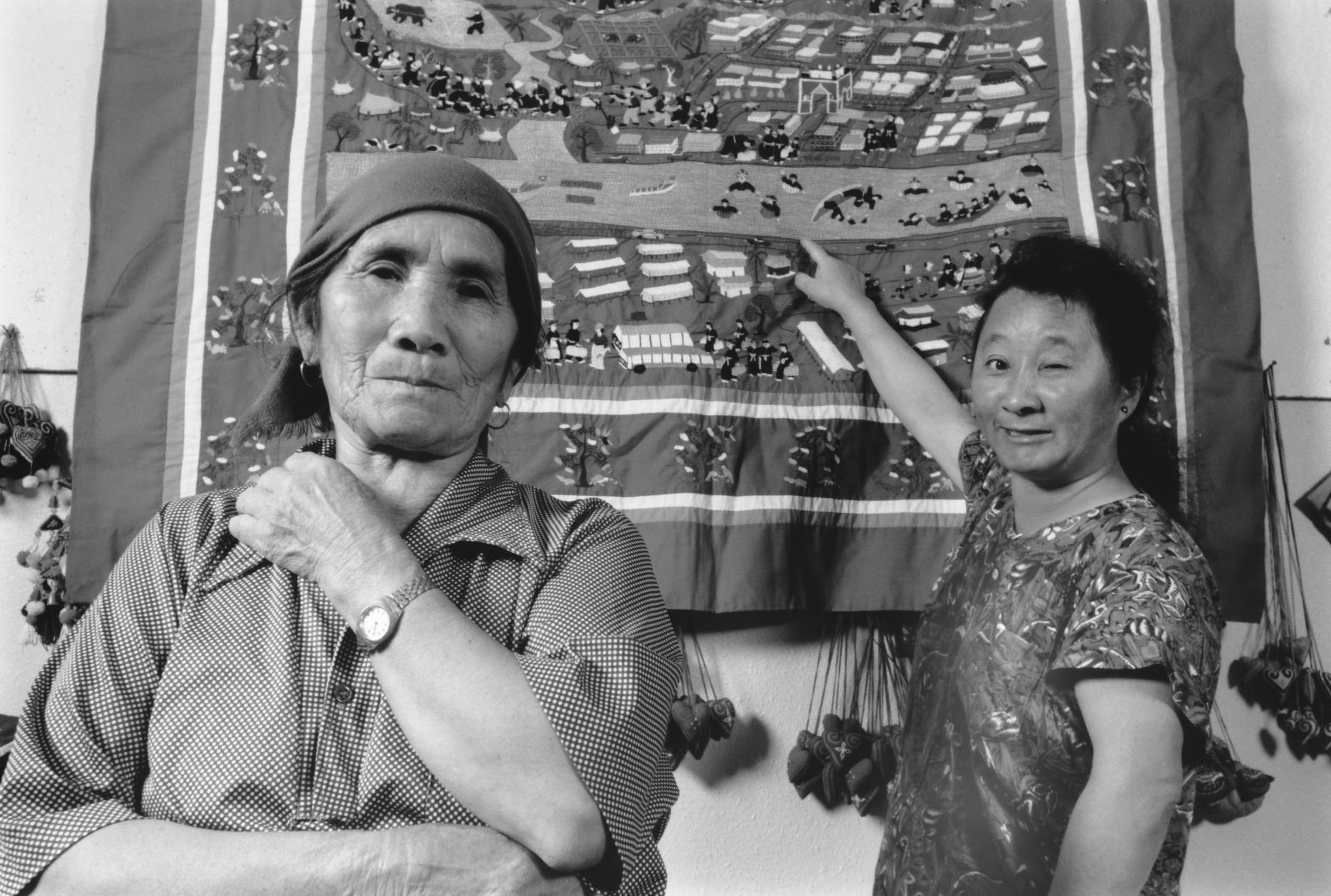


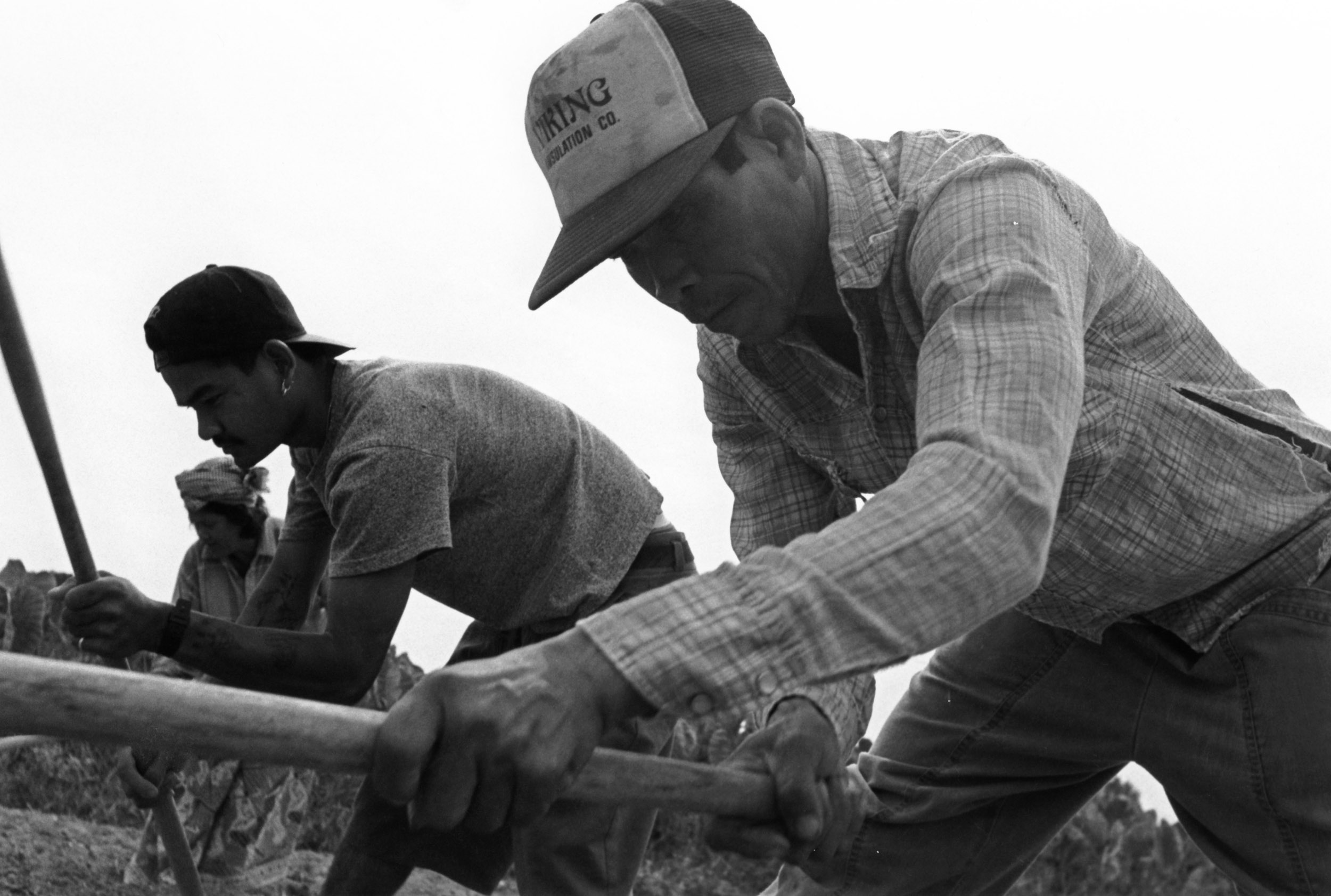
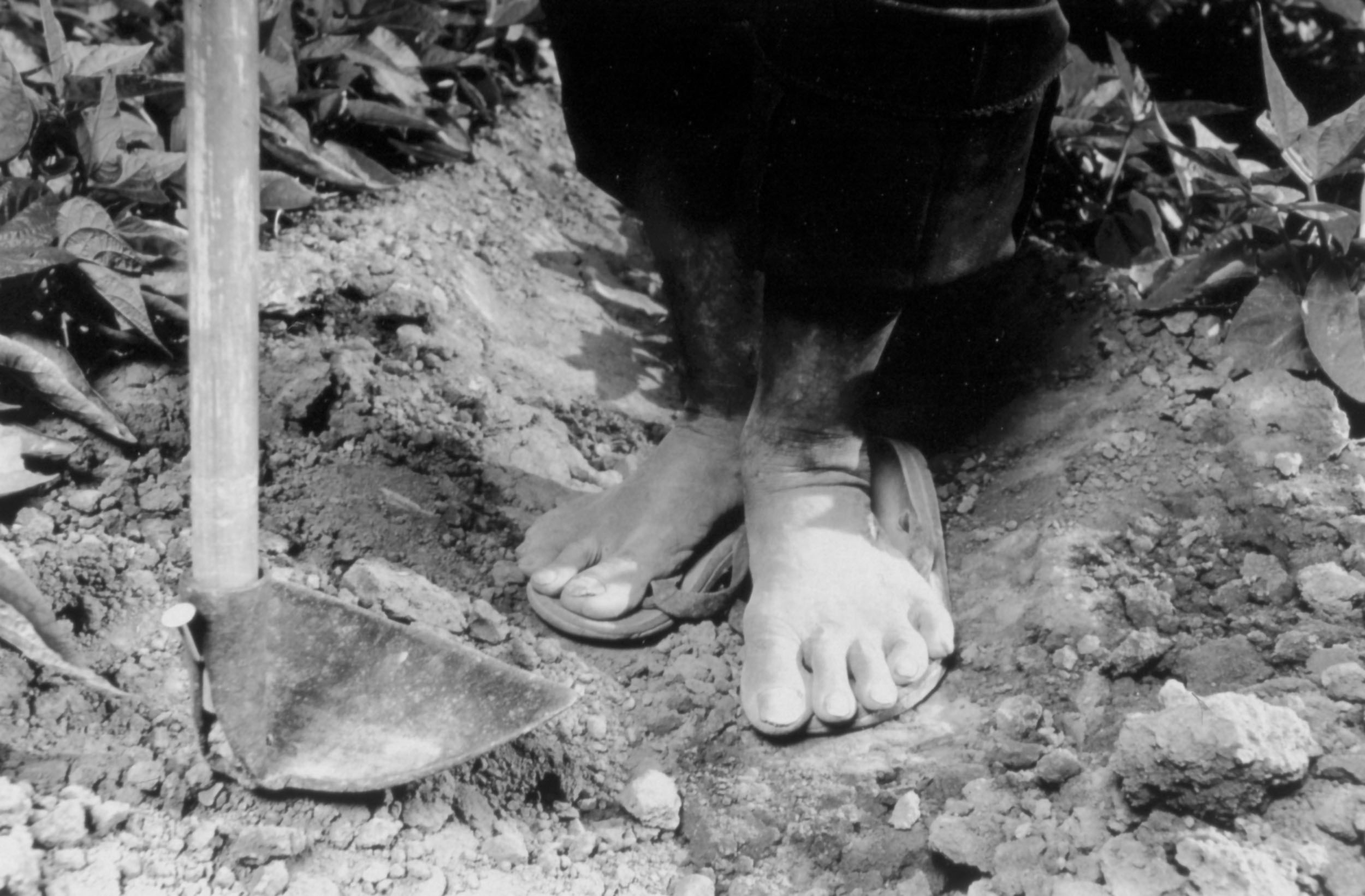

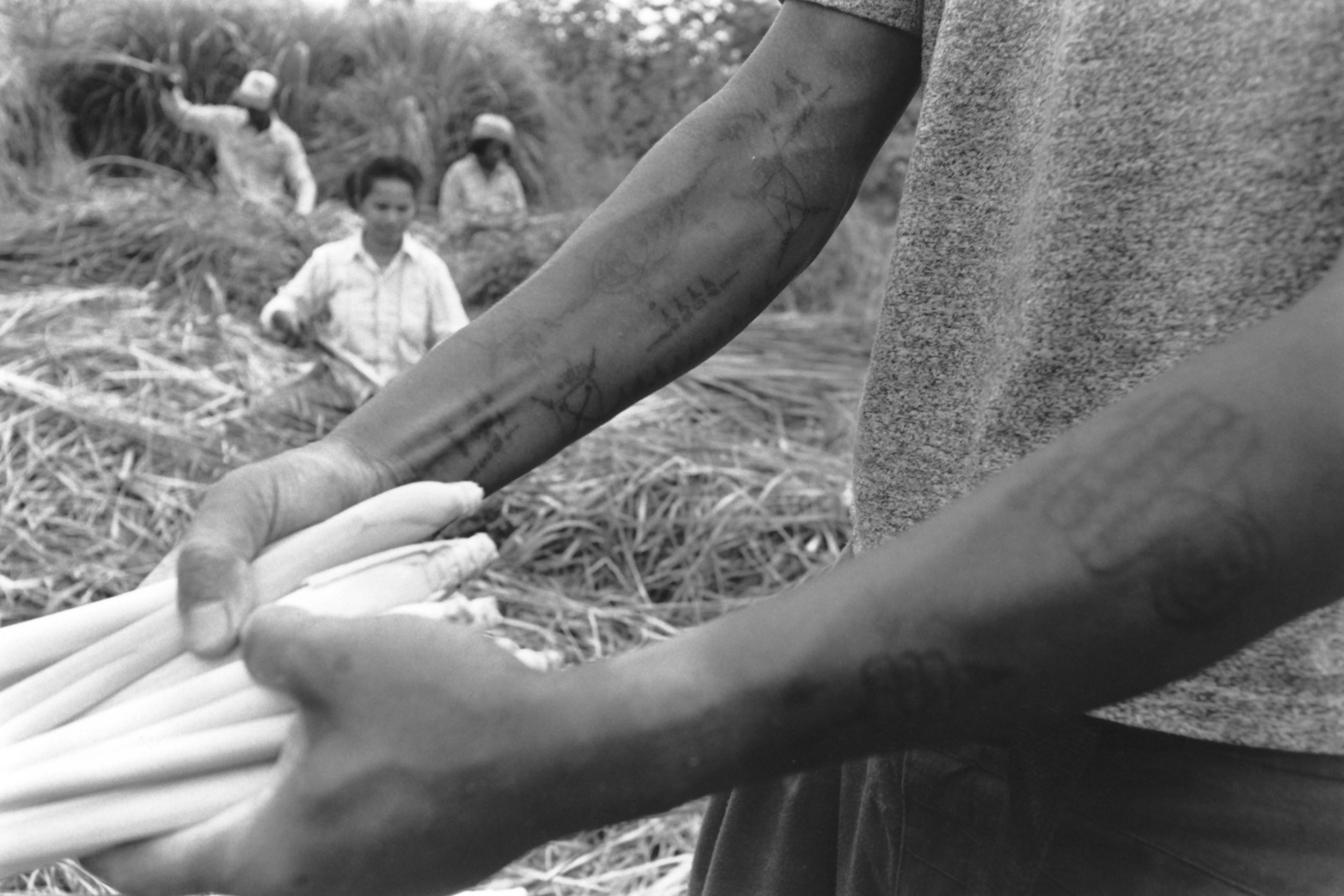
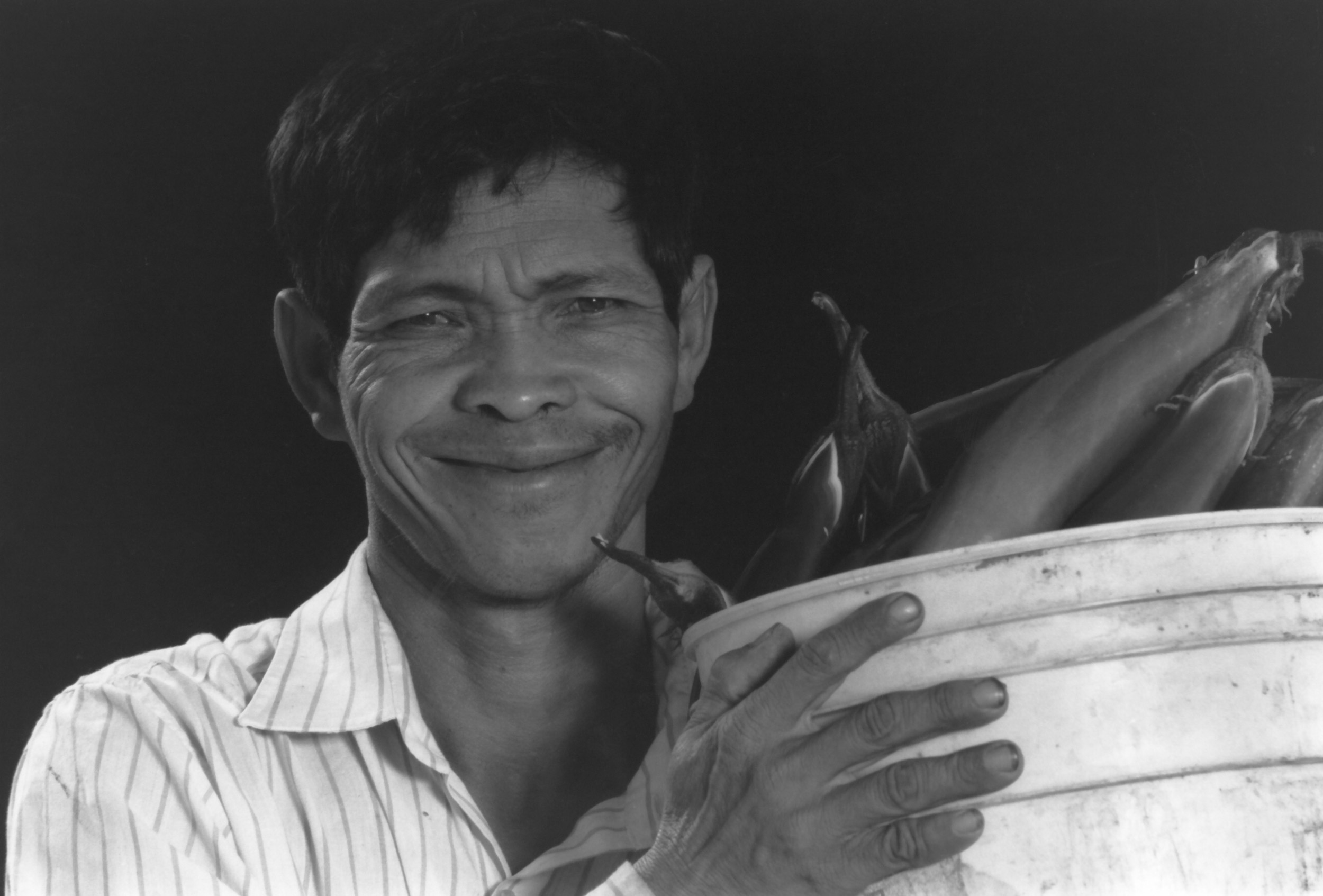
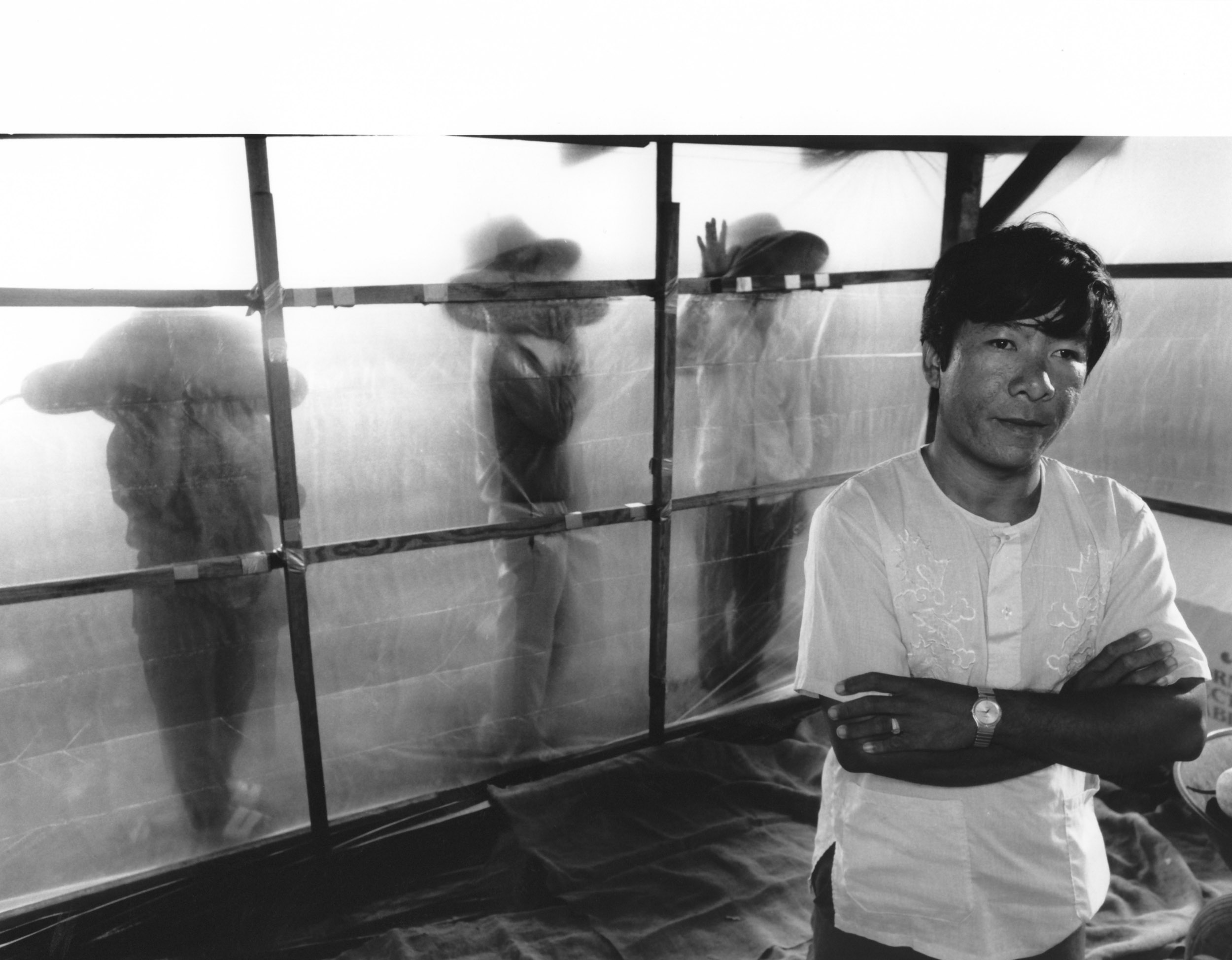
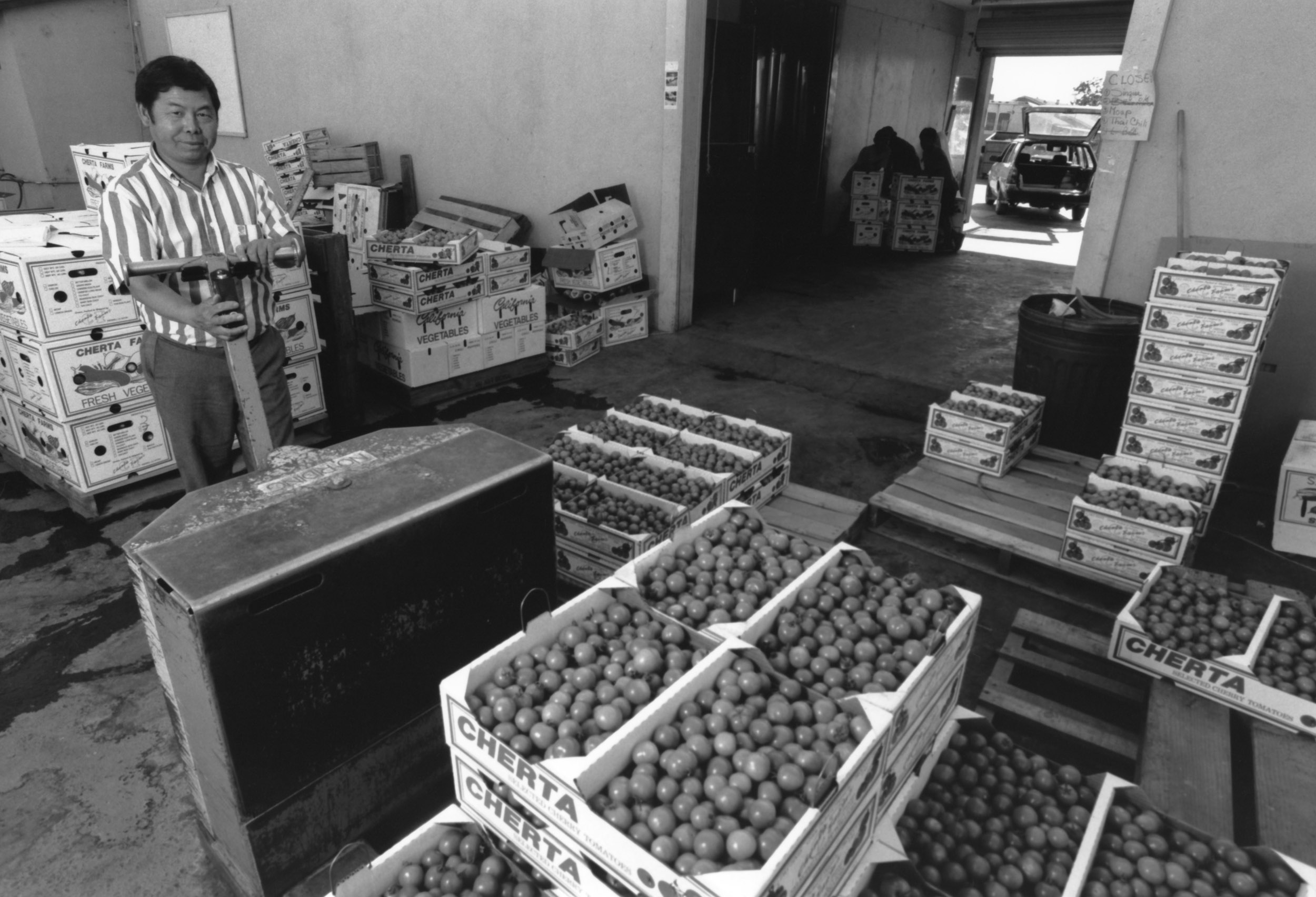
Walking into the Hmong Arts Shop in Fresno, visitors are immediately drawn to the huge tapestry hanging on the wall. At first glance the colorful, five-by-five foot cloth seems to depict a procession: men in black peasant garb, bright sashes, and traditional head caps; women wearing multicolored skirts, babies in baskets strapped to their mother’s backs, children in tow. A lush jungle gives way to farmlands bursting with crops. But the story this tapestry records is not a happy one. It depicts one of the many massacres visited on the people of Southeast Asia during the past three decades. The Hmong, an isolated community of mountain people from southern Laos, did not have a written language until the latter part of the last century. “Hmong people are storytellers,” explains Mao Vang at the Hmong Arts Shop. “Our ancestors didn’t know how to read or write, they just drew pictures. Tapestry makers would tell the story over and over again while they were making the tapestry. They see themselves in the tapestry.” This particular tapestry records a day in 1975 when Vietnamese soldiers invaded Van Vieng, a city in southern Laos. “The Vietnamese and Laotian armies are fighting in a Hmong village,” explains Vang, pointing to the intricate stitching. “The people run to the bridge to escape. The Vietnamese shoot. The people run back. They are trapped. There’s a massacre. The Hmong people try to cross the Mekong River. Some cross in inner tubes. Some swim. Some drown. The Thai police pick up the people and take them to a hospital. They stay in camps and get signed up to go to the United States. The bus takes them to the airport. America is in the lower-right corner. That’s us coming here.” In the world of the tapestry, America is pictured as a land of two-story homes, television antennas, and big automobiles. Like exotic, multi-colored butterflies alighting in California’s Central Valley, hundreds of pajntaub story cloths or tapestries capture in succinct detail the violent end of Hmong life in Southeast Asia. The cloths are the markers of a forced 10,000-mile migration of Hmong, Laotians, Mein, Vietnamese, and Cambodians into dozens of cities across the United States. Some 75,00 of these survivors traveled with their children, parents, aunts, uncles, and cousins to California, with about half of them settling into Fresno County. The exodus thrust Southeast Asian refugees into that uncertain territory demarcating post-industrial California from the ancient lifeways of pre-industrial Indochina. Suffering from the trauma of dislocation, haunted by the unspeakable horrors of war and one of the most terrible holocausts of this century, the newcomers have created a new way of life and preserved their cultural identity. In the process, they have formed a rich Indochinese rural network that has assisted them in taking the necessary, irreversible steps away from the Mekong. The refugees all say the same thing about their arrival in the valley. Etched into their psyches, this memory is second in importance only to the day they escape from their home villages in Asia. Absolutely nothing prepared them for what they encountered.